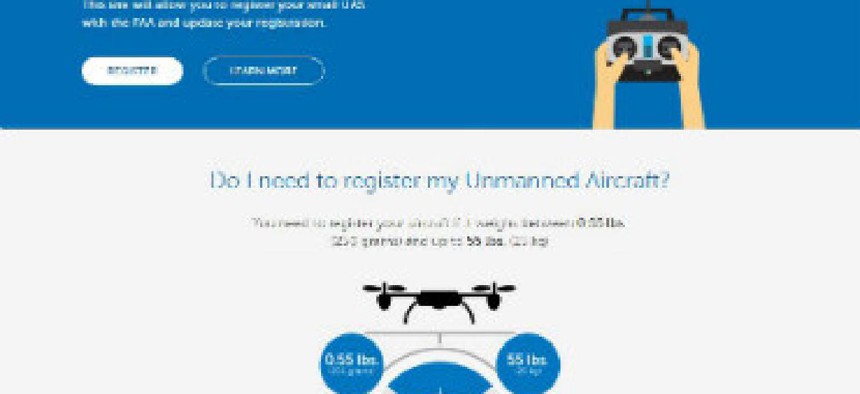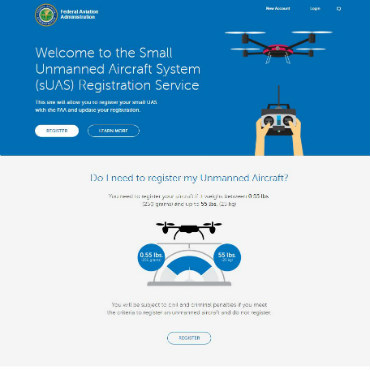FAA tweaks drone registration

The FAA is making life a little easier for federal and commercial domestic drone operators by opening its new online registration site and doubling the authorized operating altitude.

Although the Federal Aviation Administration hustled to get private users of small drones to register their aircraft on a new website late last year, the agency has now pivoted to encourage commercial and federal operators of larger unmanned aircraft systems to use the new registration system.
In mid-March, FAA Administrator Michael Huerta said drone owners had used the new web-based capability to register almost half a million small drones. Beginning March 31, the agency said commercial, federal and other non-model aircraft operators will be able to register their systems using the new, streamlined, web-based registration system instead of the legacy system operated from Oklahoma City, Okla.
The online registration process for federal and commercial systems requires information on the manufacturer, model and serial number in addition to the owner's physical and email addresses. Like the registration process for smaller drones, the federal and commercial certificates are good for a year and cost $5 per aircraft, according to the FAA.
Unlike the owners of small drones, commercial and federal users of larger systems must get a Section 333 exemption or other FAA authorization to operate.
Drone owners that have already registered through the legacy system do not have to re-register through the new system, but the FAA encouraged new owners to register online.
A few days before announcing that it was opening the web-based system for larger drones, the agency raised operational altitude restrictions on unmanned commercial and federal systems from 200 feet to 400 feet. The agency said the change will ease the workload on industry UAS operators, government agencies and the FAA's Air Traffic Organization because it will reduce the need for Certificates of Waiver or Authorization to operate in certain airspace by 30 percent to 40 percent.


